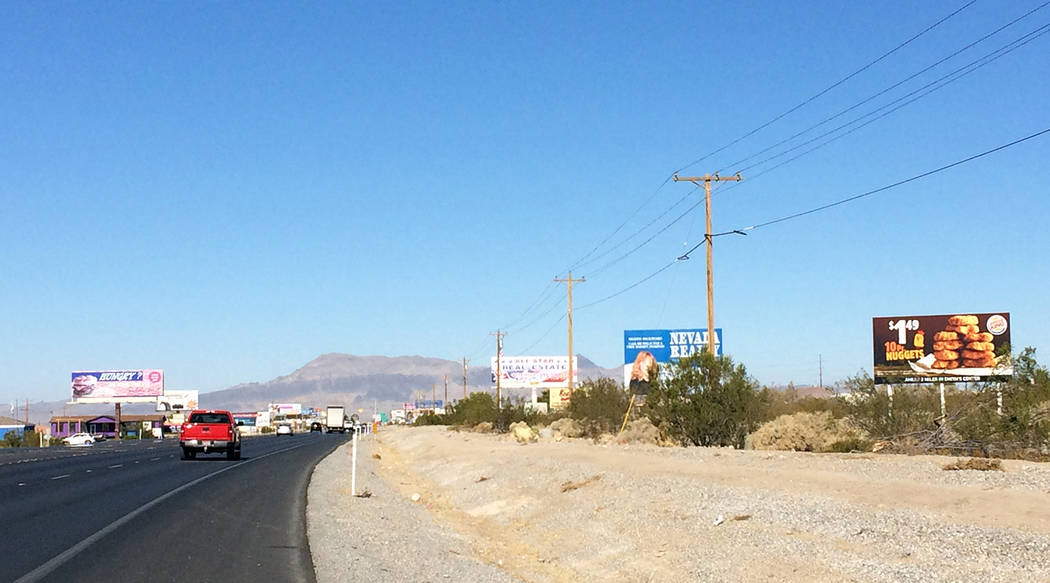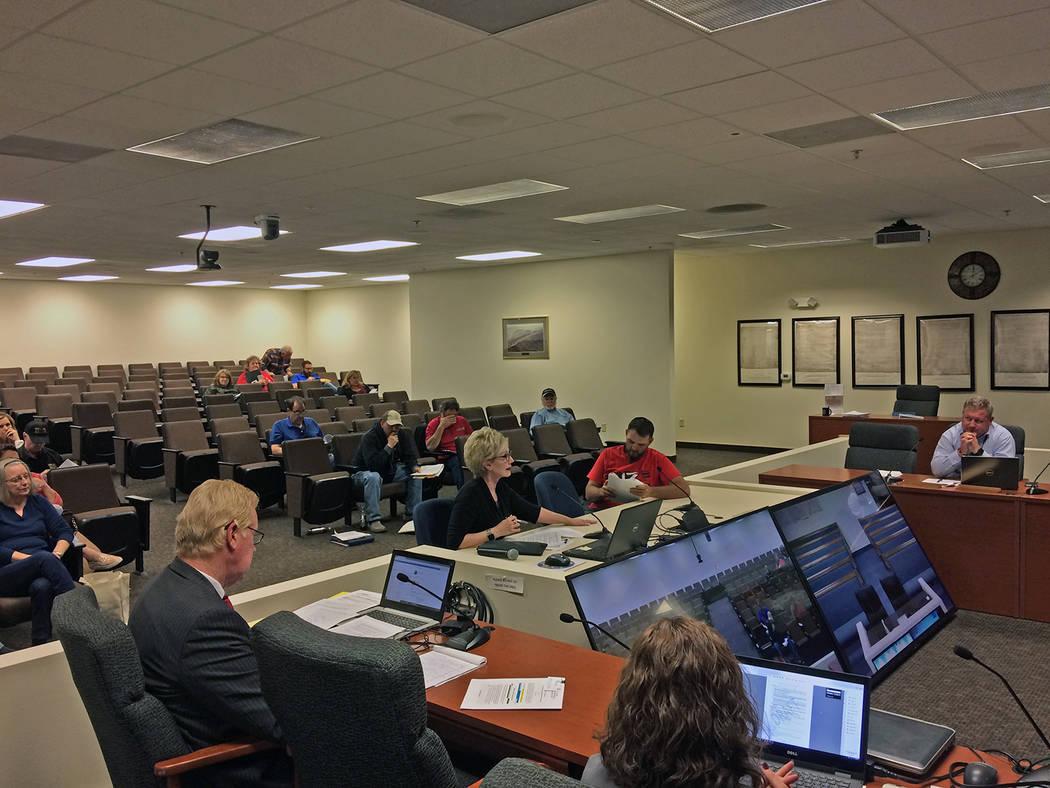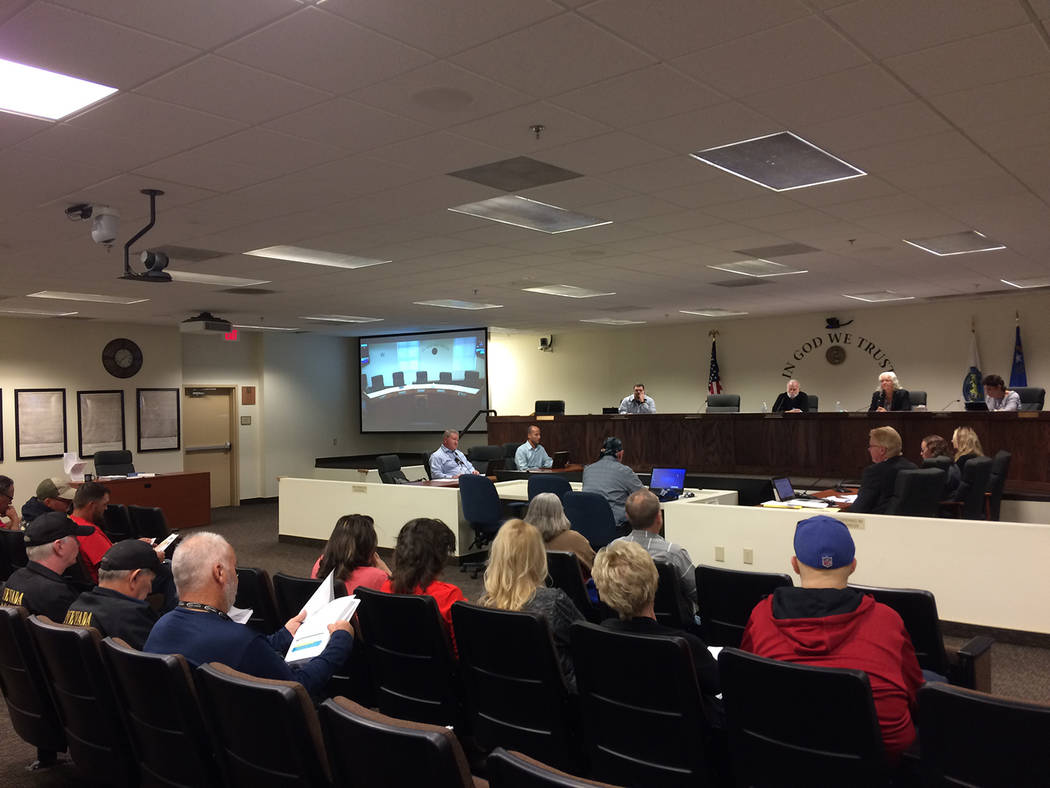Nye County sign code proposal elicits outrage
Nye County is currently considering overhauling its signage ordinance for the Pahrump Regional Planning District and many of the initially proposed changes sparked frustration from the local business community.
Throughout two workshops held in recent weeks to discuss the proposal, business owners and others tore into the document, criticizing much of what was drafted while venting their fears that such changes would negatively impact the community and could even put a damper on the local economy.
During the first of the two workshops, held on Sept. 25, Nye County Planning Director Brett Waggoner gave an overview of the background of the proposal.
He explained that in 2012, Nevada had formally adopted the Highway Beautification Act which initiated the need to alter the county’s code to align with state law. The move placed new restrictions on signs and billboards along federal highways in the state, including highways in Nye County, with no grandfathering allowed although non-conformance permits can be requested.
The state provided a five-year time period for all such signs to be brought into conformance and permitted, a deadline reached in 2017. The county is now trying to play catch-up to adopt the beautification regulations into its own codes.
While adjusting the code to conform to the new requirements of the Highway Beautification Act, the county also decided to draft many other changes to its existing code to address signage throughout the entire Pahrump Valley.
The changes were first addressed at the Pahrump Regional Planning Commission level in Jan. 2018 and in July of this year, that board had voted to recommend approval by the Nye County Commission. Both the Highway Beautification Act and local aspects of the proposal were a driver of consternation for those who attended the recent workshops.
“Quite frankly, you reduce the signage, customers don’t know, they don’t come by, you can’t afford to pay your employees and you close the doors and leave,” local real estate agent Roy Mankins asserted.
Mankins added that if the state or county attempted to have signs removed, he believed that would constitute a governmental taking and could lead to future litigation, a position with which business owner Dawn Murphy agreed.
At the Sept. 25 workshop, county officials attempted to go through the document page by page to address concerns but this method proved to be cumbersome and somewhat chaotic as everyone attempted to locate the various portions being referenced.
Concerns about vehicle signage and possible restrictions on vehicle wraps, regulations of the height, size, design and content of signs, rules regarding animated and electronic messaging signs, time frame requirements for fixing damaged signs, setback and separation standards and more were all brought to the table.
After nearly two hours of back and forth debate and only 10 pages of the 30-page document discussed, the Sept. 25 workshop was brought to a close with plans to host another one in the future. The second workshop took place Oct. 29 and once again, business owners were out in force to make their opinions known.
Many of the same statements made on Sept. 25 were reiterated on Oct. 29 and several other points were honed in on as well.
One portion of the proposed code changes that drew much irritation was an added section to exempt holiday lights from the code, but only so long as those lights were put up and taken down within a certain time period.
The draft detailed that holiday lights would only be allowable without a permit if they were placed no more than 45 days before the given holiday and taken down no more than 14 following the holiday, provisions that had many groaning in disbelief.
Vehicles containing advertising signage would also see restrictions under the proposed code, with some of the language causing members of the public to question the ambiguity of the verbiage. There were many other concerns raised about various other parts of the proposal that were vague in nature and open to interpretation, which could lead to problems with selective enforcement depending on who is doing the interpreting.
Attendees also questioned the county’s ability to even enforce what was proposed, as it is well known that code enforcement is something the county struggles with due to a lack of manpower in that department.
At this point in time, the Nye County Commission has formally voted to reject the sign code proposal as presented. The document should now be sent back to the Pahrump Regional Planning Commission level with all associated comments and concerns from the public noted so that a new draft can be created. Once drafted, the sign code proposal will once again have to undergo the public advertisement and public hearing process before the Nye County Commission would be allowed to give the proposal its stamp of approval.
Contact reporter Robin Hebrock at rhebrock@pvtimes.com



















